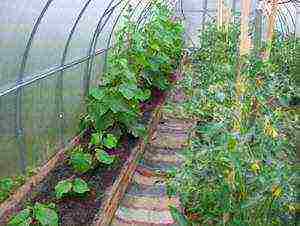Content
- 1 Planting dates for white cabbage
- 2 Selection and preparation of seeds
- 3 Site selection and soil preparation
- 4 Growing technology
- 5 How to care for plants outdoors?
- 6 White cabbage growing and care in the open field
- 7 Terms of planting white cabbage in open ground
- 8 Productive copata and hybrids of white cabbage
- 9 What should be the soil for planting white cabbage
- 10 How to prepare white cabbage seeds for outdoor planting
- 11 Planting scheme for white cabbage in the open field
- 12 Outdoor cabbage care
- 13 Diseases of white cabbage
- 14 Pests of white cabbage
- 15 White cabbage growing and care in the open field video
- 16 Where to buy seeds and seedlings with delivery
White cabbage is especially popular with Russian gardeners, who are always worried about growing it in the open field and taking proper care of it, and getting high yields.
On our table, white cabbage has long become a must. Many people love it for its high yield and good storage, juicy delicate taste and a whole range of vitamins. In winter, fresh cabbage can be used to make a salad or prepare a filling for pies. When fermented, it becomes a valuable source of vitamins.
Planting dates for white cabbage
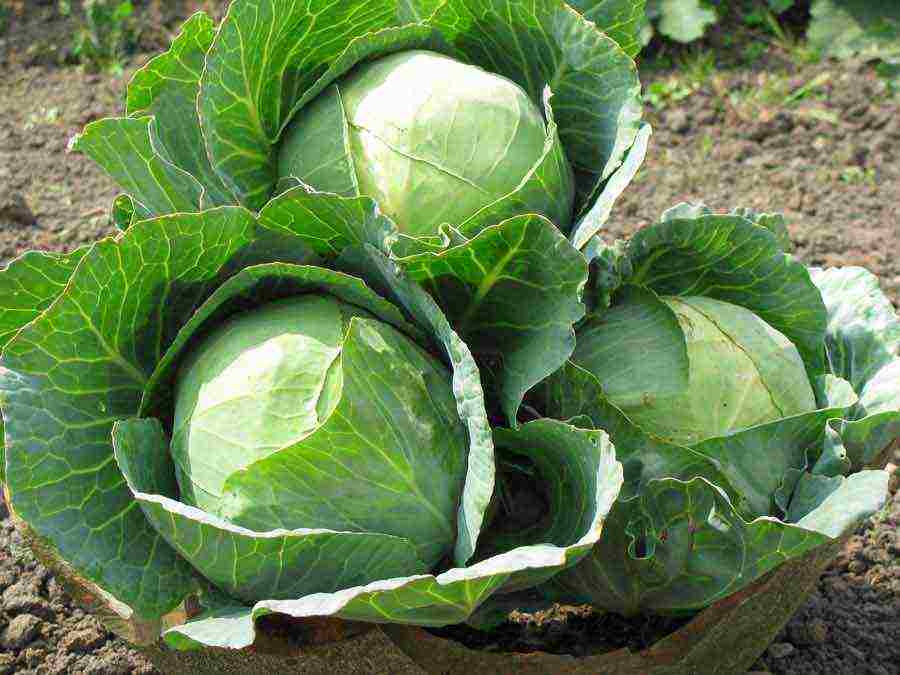
The choice of variety and the timing of sowing white cabbage depend on the intended purpose of the fruit: whether you need tender early cabbage for salads or dense strong heads of cabbage for pickling and winter storage.
White cabbage, which is cultivated by many gardeners, comes in early, mid-season and late varieties. Early varieties are eaten in the summer. Mid-season can be eaten fresh or salted for the winter. Late varieties are intended for long-term winter storage.
The timing of sowing white cabbage for seedlings depends on the variety:
- early: from 1 to 25 March;
- medium: from April 25;
- late: - from April 1 to the third decade of the month.
From the moment of sowing seeds for seedlings to planting seedlings in open ground, it usually takes 45-50 days.
White cabbage can be sown in open ground with seeds. In the middle lane, in early April, seeds of early cabbage are sown in the ground, and in the first decade of May - late. In the southern regions, mid-season varieties are sown from the end of April to the third decade of May, late-maturing varieties - in 1-2 decades of May.
Selection and preparation of seeds
The choice and purchase of cabbage seeds must be taken responsibly: the future harvest depends on the sowing material.
To increase immunity to fungal diseases, cabbage seeds are recommended to be warmed up in water at a temperature of about 50 ° C for 20 minutes before sowing, and then immersed in cold water for 5 minutes.
Before sowing, the seeds are soaked in cold water and kept for 24 hours. This hardening increases the vigor of the seeds and promotes early germination. In the future, in the open field, such seedlings will withstand frosts down to -7 ° С, and unhardened ones will not withstand even -3 ° С.
Site selection and soil preparation
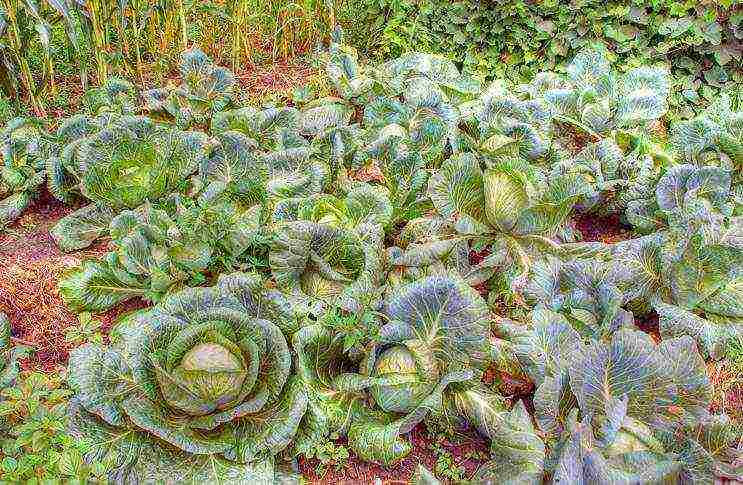
The area for planting cabbage in the open field must be prepared in advance. The sun should illuminate it from morning to evening. Early varieties of cabbage are more suitable for sandy soil and loam, for late and middle varieties, clay soil and loam are optimal.
The acidity of sandy soils should not exceed 6, clay or clay-sandy - 7. Acid soils are not suitable for cultivating cabbage.
It should be borne in mind that it is undesirable to plant cabbage in open ground after tomatoes, beets, radishes, turnips.These crops "suck" nutrients from the soil, and diseases that are dangerous for cabbage can remain in the area after them. For cabbage, it is better to choose those areas where cereals, legumes, cucumbers, and potatoes were previously grown. You cannot plant cabbage on the same bed for more than 2-3 years in a row.
The preparation of the site for growing cabbage should be started in advance, even from the previous planting in autumn. In dry weather, the soil must be dug deeply. There is no need to strive to level the surface: the ground with steep irregularities will absorb more moisture during the winter.
In the spring, after the snow melts, they carry out the "moisture closure" - the soil surface is leveled with a rake to prevent too rapid evaporation of water. Weeds that begin to crawl out of the ground must be removed immediately.
Growing technology
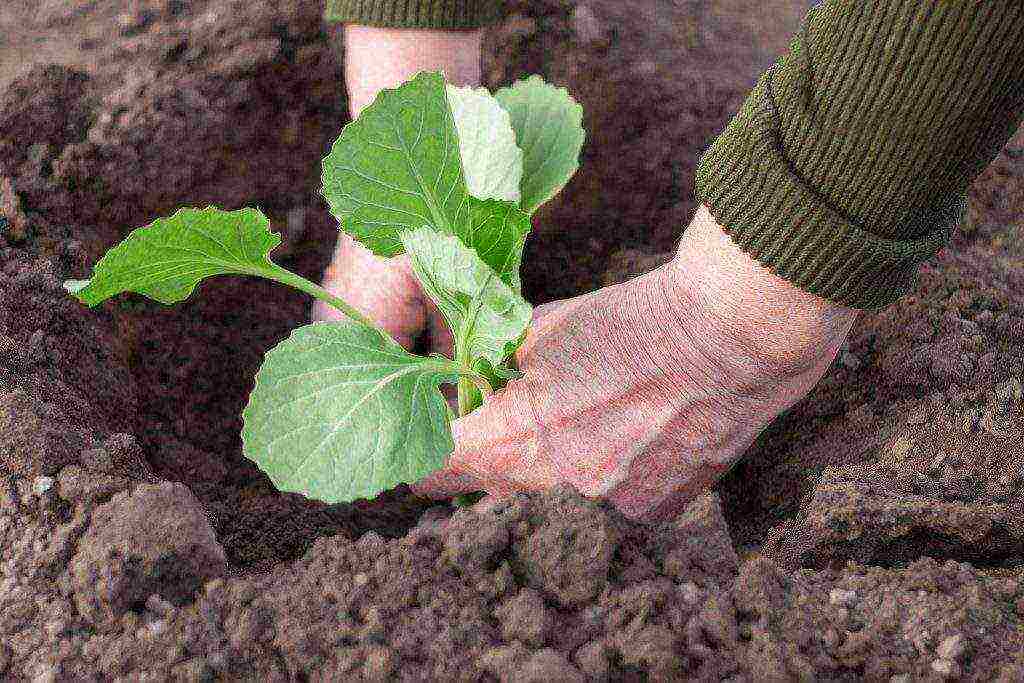
2 weeks before planting in the garden, the seedlings begin to harden in order to prepare them in new conditions in a permanent place. To do this, in a room with seedlings in the first 2 days, open a window for 3-4 hours, having previously protected the seedlings from a draft.
Then, for several days, the seedlings are placed on a loggia or balcony for a couple of hours, covering the shoots with gauze from direct sunlight. After a week, watering is reduced, the seedlings are taken out to the balcony and kept there until planting in the ground.
Seedlings of early white cabbage are planted in a garden bed when it reaches a height of 12-20 cm and 5-7 leaves are formed in the seedlings. Seedlings of mid-season and late cabbage can be planted in a garden bed with a seedling height of 15-20 cm and the formation of 4-6 leaves. Seedlings of early varieties usually reach the required parameters by early May, mid-season and late ones - from late May to mid-June.
To plant white cabbage seedlings in an open area, use the following scheme:
- early and hybrid varieties - 30x40;
- mid-season - 50x60;
- late - 60x70.
Cabbage requires a lot of light and space, so you need to try not to thicken the beds. The holes in the soil should be made a little larger than the root system of seedlings with a peat-distilled glass or an earthen clod.
It is recommended to add to each well:
- a handful of sand;
- a handful of peat;
- 2 handfuls of humus;
- 50 g of wood ash;
- half a teaspoon of nitrophosphate.
The additives are thoroughly mixed and watered abundantly. An earthen lump with the root system of the seedling is lowered directly into the slurry and sprinkled with moist earth, and dry earth is added on top. If the seedlings are too elongated, they are planted so that the first pair of leaves is flush with the surface of the plot.
Without seedlings, seeds are sown immediately on the garden bed quite thickly according to the scheme 10x70 cm to a depth of 1-1.5 cm. It is recommended to water the soil and cover it with spunbond. Only a month later, after the formation of 3-4 true leaves, the cabbage sprouts will get stronger.
Until that time, they will require particularly careful care: regular weeding, pest control. It is recommended to thin out cabbage in the phase of 4-6 true leaves, leaving a distance between seedlings in a row of 40-50 cm.
How to care for plants outdoors?
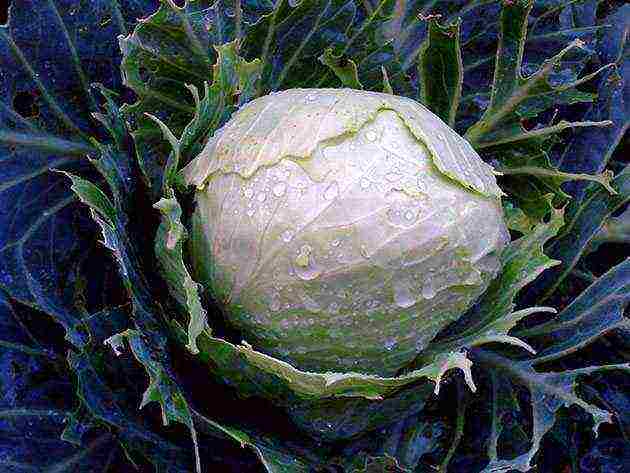
If the weather is sunny after planting the seedlings, the seedlings need to be shaded for a while with non-woven material or newspapers. During the week, the plants are watered every evening from a watering can with a splitter.
After the end of this period, the shelter can be removed if frosts are not expected at night. In the future, for the care of seedlings in the open ground, weeding and loosening of the site, watering, and regular feeding are carried out. The hilling procedure is carried out for the first time 3 weeks after planting the cabbage, and after another 10 days it is repeated.
Watering
Cabbage needs a lot of moisture, so strict adherence to the irrigation regime is required. Evening time is chosen for watering. Between heavy watering on cloudy days, an interval of 5-6 days is enough.
During the hot period, you will have to water the plants every 2-3 days. After watering, the soil on the site must be loosened, while hilling the cabbage.To retain moisture, experienced gardeners recommend a mulching peat layer 5 cm thick, which simultaneously feeds developing plants.
Top dressing
If cabbage is fed during the seedling phase, it should develop quickly and intensively. After planting in the ground, the plants continue to be fed. When the leaves begin to grow, it is best to add a solution of 10 g of ammonium nitrate in 10 liters of water to the soil.
This dose should be sufficient for 5-6 plants. When the formation of the head of cabbage begins, the cabbage is fed a second time from the same calculation, dissolving in 10 liters of water 8 g of potassium sulfate, 5 g of double superphosphate and 4 g of urea.
Treatment against diseases and pests
It is highly undesirable to use pesticides for processing cabbage. To protect young plants from slugs and flea beetles, dusting with ash with the addition of tobacco dust will help.
To destroy aphids and caterpillars, cabbage is sprayed with this infusion: pour 5 liters of water with 2 kg of tomato tops, infuse for 3-4 hours, boil for 3 hours, cool, filter and dilute with water in a ratio of 1: 2. To ensure better "sticking" of the infusion to the leaves, add 20-30 g of grated tar soap to it.
Onion peel infusion is effective against caterpillars and aphids. Fill a liter jar of husk with 2 liters of boiling water, leave the solution to stand for 2 days. Then the resulting infusion is filtered, another 2 liters of water and 1 tablespoon of dishwashing detergent or liquid soap are added to it.
The fight against the scoop, cabbage fly, beetle larvae is carried out with the help of ants. A jar of jam or honey diluted with water is dropped on the site. Black ants, attracted by the sweet, also eat the larvae.
For preventive purposes, sage, rosemary, mint, marigolds, basil, cilantro and other spicy plants are planted in and around the area with cabbage. Butterflies, slugs, flea beetles, aphids will be scared away by the tart aroma, which will at the same time attract their enemies - lacewings, ladybugs, horse-riding beetles.
White cabbage growing and care in the open field. To some, growing cabbage may seem too troublesome, but the worries associated with watering, fertilizing and weeding, in this case, always pay off with a record harvest.
There are few crops that can yield a yield of 10 or more kilograms per square meter of a garden bed, and for cabbage this is the minimum.
White cabbage growing and care in the open field
How to grow cabbage in an open home garden: preparation, planting and care, we will tell you in our article.
Terms of planting white cabbage in open ground
To find out how to properly plant cabbage in open ground, you first need to decide on the variety and variety of this vegetable. Cabbage belongs to the cruciferous family; today there are more than a dozen varieties of vegetables that are commonly eaten.
Depending on the climatic zone and the selected variety of seeds, it is recommended to plant them from the beginning of April to the end of the first decade of May. It is important to take into account the climatic conditions of a particular region. It is due to the fact that cabbage seedlings can withstand short-term frosts down to -3 ° C.
Productive copata and hybrids of white cabbage
The main difference between the copts and hybrids of the white cappuccino is the period from the appearance of inputs to harvesting, therefore, all species are divided into groups:
- sleep (maturation period 90-130 days);
- average (130-150 days);
- midday (150-165 days);
- afternoon (165-180 days).
What should be the soil for planting white cabbage
For planting cabbage, you should choose flat and light areas without shading. The soil should be soft, light, well fertilized with humus and always with a slightly acidic reaction. To check the acidity of the soil, you can use special devices - they are always on sale in specialized stores and markets.
The acidity of 6.7-7.4 units is considered optimal for the growth and development of cabbage. If this indicator is less, then the Ph of your soil is too high: the plants will be sick, grow and develop poorly, and give a small crop. By the way, beets and cabbage suffer most from high acidity.
The first sign of high soil acidity is the presence of a large amount of horsetail on the site. Buttercups, pikulnik, whiteus and other weeds actively grow in such areas. The most common lime helps to reduce acidity.
You need to bring it in in the fall, dig up the site and in the spring it will be ready for planting cabbage. If the acidity is high, and you do not lower it, the plants will suffer from keel and other diseases.
Cabbage grows well after legumes and grains. Most often it is planted after beans and peas. If the cabbage is planted after onions or garlic, then the plants will hurt much less. Precursors such as cucumbers, root vegetables and potatoes are allowed.
How to prepare white cabbage seeds for outdoor planting
In order to improve the resistance of seeds and future plants, they are treated with hot water. To do this, cabbage seeds are poured with water at a temperature of 40-45 ° C for 15 minutes, and then put into cold water for several minutes.
Also, it is very important to keep them in a nutrient solution from any mineral fertilizers for at least 12 hours. In order for the seeds to harden, they still need to be sent to a cold place with a temperature of 1-2 ° C for a day, after having been washed in cold water.
This room can be either a basement or a refrigerator.
Planting scheme for white cabbage in the open field
The recommended sowing depth of seeds is 2.5-3.0 cm, but the distance between the holes directly depends on the selected variety.
For example, when planting early-ripening varieties, it is enough to leave about 40 cm, and for mid- and late-ripening varieties, the recommended distance is 50.0- 65.0 cm, since they are larger. the main landing patterns are square-nested and ordinary.
In the first case, the scheme looks as follows 60.0 X 60.0 or 70.0 X 70.0 cm, and in the second 90.0 X 50.0 cm.
But when sowing seeds, it is important to take into account that they will be thinned repeatedly, and the weak will be discarded until only the strongest remain. It is performed twice. The first time the plants are in the 1st true leaf phase.
In this case, 2-3 shoots are left in the hole. The second weeding is performed in the 3-4 leaf phase. After that, 1 plant remains in the hole. The removed seedlings are used for seedlings. It is important - before thinning, the plants are moisturized.
Outdoor cabbage care
White cabbage growing and care in the open field. If the planting process was successful, your seeds have sprouted safely, you can relax for a while, now no special care of the cabbage is required.
All you need to do is remember to follow the moisturizing regime (water the cabbage beds moderately 2-3 times a week). After a while, the number of waterings can be reduced to one, but then it should be abundant.
Experienced gardeners recommend not to carry out root watering, but to provide sprinkling, then you will moisten not only the soil itself, but also the air around the plant. You also need to take care of the soil in the cabbage bed, loosen it regularly, remove weeds and make sure that pests do not appear.
We must not forget about the need for regular fertilizing: for the first time, fertilizers need to be applied no earlier than 14 days after planting in a permanent place in the open field. The second time - two weeks later, to support the developing plant.
Subsequently, fertilizing should be carried out as needed, but you should not be too zealous so as not to harm the plants.
Diseases of white cabbage
It is important to systematically fight cabbage diseases during flowering and head formation: in August - with the aphids and caterpillars of the whiteworm and cabbage scoop that appear at this time, which can cause great damage, in September - with pests on the plants remaining on the site.
The main difficulty in protecting cabbage from diseases is due to the fact that it is extremely undesirable to treat cabbage with pesticides at any stage of its development (although some drugs can be embedded in the soil), and after setting the head of cabbage it is strictly forbidden because poisonous substances can accumulate in it. leaves, while agents that are less harmful to humans and against diseases of cabbage, as a rule, are less effective.
So, for example, against many diseases, you can use a decoction of hot pepper (it even protects against bacteria and viruses), horsetail or erect marigolds (horsetails and marigolds protect against fungal diseases), but not so much for treatment as for protecting plants that have not yet become diseased. located next to the patient.
Pests of white cabbage
Remember, many insects are dangerous for cabbage, so you need to fight them as soon as the problem has been noticed.
Cabbage and other cruciferous crops (radishes, foreheads) are damaged by insect pests during the entire growing season, but the most dangerous is damage by pests to cabbage in the early period of plant development.
Since spring, cabbage shoots can be destroyed by cruciferous flea beetles, underground parts of plants are damaged by the larvae of cabbage flies and caterpillars of the gnawing scoop (c-black scoop), cabbage leaves damage the caterpillars of the cabbage scoop, gamma scoops, turnip whiteworm and cabbage moth.
Cabbage aphid sucks the juice from the leaves, they shrivel, the plant stops growing. With a strong infection, the pump may not start. Testes of cabbage and other cruciferous plants are damaged by rape beetle and cruciferous bugs.
White cabbage growing and care in the open field video
White cabbage growing and care in the open field.
Where to buy seeds and seedlings with delivery
The Scientific and Production Association "Sady Rossii" has been introducing the latest achievements in the selection of vegetable, fruit, berry and ornamental crops into the wide practice of amateur gardening for 30 years.
In the work of the association, the most modern technologies are used, a unique laboratory for microclonal reproduction of plants has been created.
The main task of NPO Sady Rossii is to provide gardeners with high-quality planting material for popular varieties of various garden plants and novelties of world selection. Delivery of planting material (seeds, bulbs, seedlings) is carried out by Russian post.
We are waiting for you for shopping at the NPO Sady Rossii.
Did you like the article? Share with your friends on social networks:
.
Cabbage has always been a rich source of vitamins, minerals and other nutrients. It has not only nutritional value, but also healing properties. Its use is the most versatile, therefore it is preserved in different forms: fresh, pickled, pickled and dried. It is not so difficult to grow cabbage on your personal plot in the country if the technology of the process is not violated.
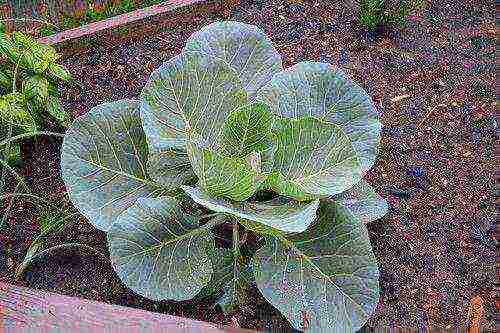
Cabbage grows well outdoors, provided it is warm and well lit
White cabbage - refers to cold-resistant plants, but an important condition for its growth is soil moisture and lighting. Intensive growth of cabbage is possible only with sufficient humidity in the air and soil. The optimum temperature for seed germination is about + 20 ° C. Intense heat inhibits the growth of leaves and does not allow the head of cabbage to form normally.
Preparing cabbage seeds for sowing
Before planting on seedlings, cabbage seeds must first be prepared. They are poured onto a layer of gauze folded in three.After that, for disinfection, they are immersed in hot water, the temperature of which should be at least + 50 ° C. You need to keep the seeds there for no more than 15 minutes, then lower them into cold water for a couple of minutes. After that, the gauze roll is laid out in a flat container and left alone for a day at a temperature of +20 + 22 ° C, regularly additionally wetting the gauze as it dries. During this time, most of the seeds will swell, after which they are sent to the refrigerator for a day (on the lower shelf for vegetables). There they will undergo a hardening process. It is this treatment that will provide healthy and strong seedlings with a high-quality root system.
When the seeds are taken out of the refrigerator, they are thoroughly dried to a free-flowing state, after which sowing can begin.
Before sowing seeds, you need to purchase special soil for cabbage seedlings in any specialized store. The soil from the street or from the backyard is not the best choice, since there may be pathogens of various diseases that affect the shoots even before they germinate. But even purchased soil is recommended for disinfection to be calcined in the oven for 15 minutes, set at + 200 ° C.
When the earth has cooled, it is poured into a seedling box, but before that it is well cleaned and washed using laundry soap. Seeds are sown into holes to a depth of no more than a centimeter and poured with a solution of manganese of a slightly pink color for additional disinfection. After that, the box is wrapped with cling film, creating a greenhouse effect, and removed to a warm place.
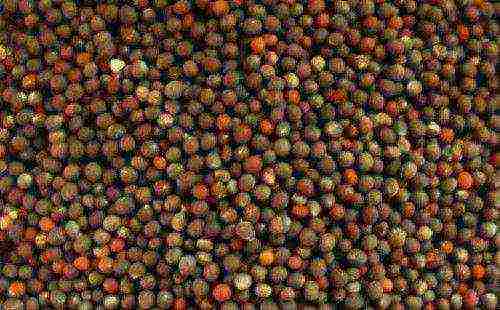
Cabbage seeds should be processed before planting
Germinating seeds
White cabbage does not tolerate outside interference and transplantation well, so it is better to sow seedlings in peat pots. Sowing for seedlings is carried out from late February to early May. Early June cabbage will appear in the garden if the seeds are sown in early April. After 40 days, the matured shoots will already be able to actively develop and grow in the open field.
But now the most important thing is not to miss when the first sprouts emerge from the ground. Here on the surface appeared small "loops" of sprouts, so the film is removed from the box. It is exposed to the light on a glazed balcony or window sill, the windows are located on the sunny side.
Do not allow the sprouts to stretch out, such seedlings cannot be called strong. Development failures occur due to low or too high air temperatures and improper or insufficient humidification. The optimum temperature for active cultivation of seedlings is no more than + 17 ° C. Otherwise, the sprouts are stretched and thinned. Excessive moisture has the same effect on plants, since watering should be moderate.
In order for the seedlings to be friendly, and the sprouts to be strong and well-developed, they need to be provided with good access to sunlight. If there is not enough light, then the sprouts become thin, pale and elongated, their growth slows down.
If the seedlings are struck by a disease called "black leg", which is characterized by darkening of the lower part of the leg and the bending of the plant, then it is pulled out neatly together with the root, and healthy shoots are transplanted into another box with new soil.
If the disease has not yet strongly affected the plant, you can try to save it by irrigating the stem and the ground around it with a weak solution of manganese, sprinkling it lightly with wood ash and stop watering altogether for a while. If the resuscitation does not help, then the plant is recommended to be thrown away so as not to infect the rest.
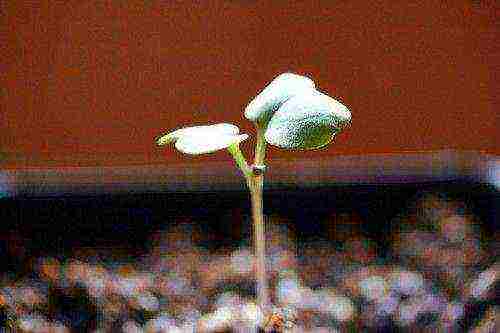
Cabbage sprouts love good lighting
Seedling picking
When the seedlings reach 3 weeks of age, it is advisable to plant them in separate cups so that they do not interfere with each other's development.
To do this, using a special spatula or spoon, the plant is taken out together with the earth and transplanted into a glass half filled with earth.On top of the sprout, it is covered with soil up to the cotyledonous leaves. The cups are placed on the windowsill, the main thing is that the seedlings do not burn out in direct sunlight. In cups, dived seedlings should be at least three days in order to take root well.
Some gardeners prefer to place white cabbage seedlings in a greenhouse, which maintains an optimal environment for active growth. This technology will ensure the growth of healthy and strong seedlings that will quickly adapt to growing conditions in the open field. Then a pick is not required.
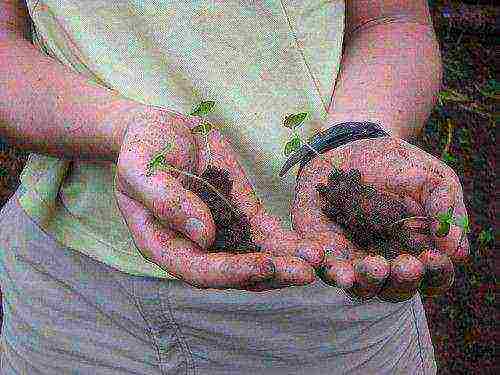
Pickling cabbage should be done carefully so as not to damage the roots.
Planting seedlings
Before digging up the seedlings, the earth is watered abundantly and only the most developed sprouts are carefully removed from the moistened soil so as not to damage the root system.
The choice of a site for the garden is a very important point. It is necessary that it is well lit, and the ground is moist and loose. It is advisable to place a bed with white cabbage in the place where winter wheat, tomatoes, cucumbers or peas grew last year. You can also grow good heads after eggplant, corn or pepper.
It is necessary to plant seedlings, adhering to a certain scheme. Early June cabbage is planted in the ground at a distance of 50 cm from each other. After planting seedlings, you need to provide active care, which consists in:
- daily watering if the ground is dry (do not provoke waterlogging);
- treatment against parasites;
- regular loosening of the soil between the rows;
- top dressing.
Immediately after planting, sprinkle the sprouts with woody, ash, which can protect the seedlings that have not yet matured from pests. Also, after planting, it is advisable to water the white cabbage with a slightly pink solution of manganese in order to protect it from all kinds of diseases. Every day, after watering, it is recommended to additionally loosen the soil in the garden so that oxygen is constantly available to the root system.
Another problem with growing white cabbage in the open field is caterpillars. Butterflies lay their eggs on cabbage leaves, from which these pests later emerge.
Therefore, it is recommended to treat the seedlings with chemicals after planting. If you want to grow an environmentally friendly product in your country house, then you will have to actively collect eggs with your own hands. This method will be effective only in the case of a small area of the garden with cabbage.
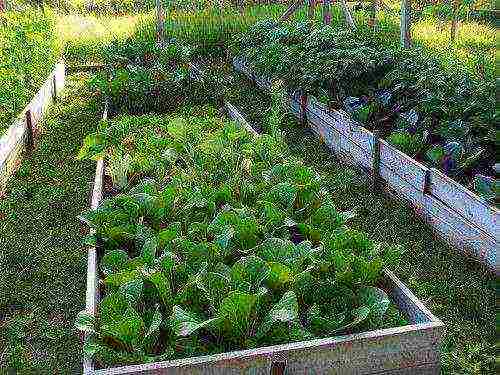
It is very important for cabbage to choose a suitable place
Sowing seeds directly into the ground
Some gardeners in their country house prefer to grow white cabbage using a seedless method. For this, the sowing of seeds is carried out directly into the open ground. This method does not affect the quality and quantity of the crop. And since the processes of seed growth do not stop even at a temperature of + 3 ° C, this allows them to be sown already at the beginning of April.
The seedless method hardens cabbage sprouts, they germinate strong with a developed root system. Such plants are less picky about feeding the soil and its moisture, but the presence of sunlight for cabbage is mandatory. Sowing seeds outdoors is characterized by a reduction in the growing season by at least 15 days. But when sprouts appear, you need to control their density and, if necessary, thin out. The process technology also involves pest control. Note that early cabbage varieties are not suitable for growing this way. The seedless method is the optimal solution only for late varieties.
Before sowing cabbage seeds, you need to properly prepare the garden bed. To do this, after harvesting wheat, peas or corn for silage, the land is plowed. With the onset of spring, weeds are destroyed that have sprouted on the site of the future garden and, using a conventional cultivator, loosen the earth to a depth of 10 cm.If there are a lot of weeds, and it is difficult to weed them out, you can treat the land with herbicides.
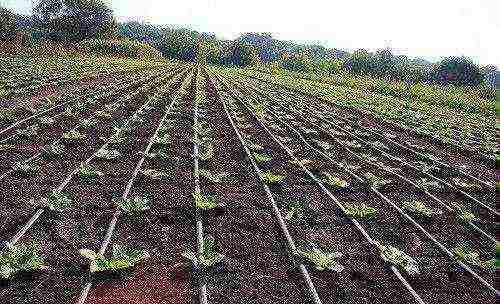
Cabbage beds should be free of weeds
The best time to sow late varieties of cabbage is from mid-April to early May, and for medium-late varieties, it is advisable to sow seeds in mid-May. When it's time to plant the seed, you need to properly prepare it. To do this, they are calibrated and heated for several hours in hot water at + 50 ° C. After this procedure, the seeds are dried to a free-flowing state. For ballast, one part of the seeds is mixed with five parts of superphosphate and the mixture is sown in open ground using a vegetable seeder. The width between the rows should not be less than 70 cm, and the planting depth should not be more than 3 cm. The norm is to sow a kilogram of seed per hectare of land.
After shoots appear and at least 2 leaves are formed on them, the shoots should be thinned, after opening the 5th leaf, the thinning process is repeated.
The technology assumes an optimal distance between seedlings of about 50 cm. Subsequent care for cabbage, which is grown using the seedling method, does not differ from that which was planted from seedlings.
You can grow a good white cabbage with tight heads, but you will have to make every effort to do this. But on the other hand, organic cabbage, which you were able to collect in your garden, will be present on your table in different dishes.
Subscribe Be aware of new products on our site
Most of us are most familiar with traditional white cabbage, but there are many varieties of this vegetable: cauliflower and broccoli, kohlrabi, Brussels sprouts, Peking, Savoy, etc. But most often in Russian gardens there are white and red varieties.
From the video you will learn how to effectively plant cabbage in open ground.
Growing good cabbage in the open field is actually not as easy as it might seem, the vegetable here faces many dangers, from pests to soil moisture. Factors such as temperature fluctuations or the properties of the soil itself also have an influence on the result. In addition, you should take into account the illumination of the site - it is better to plant cabbage in sunny beds. 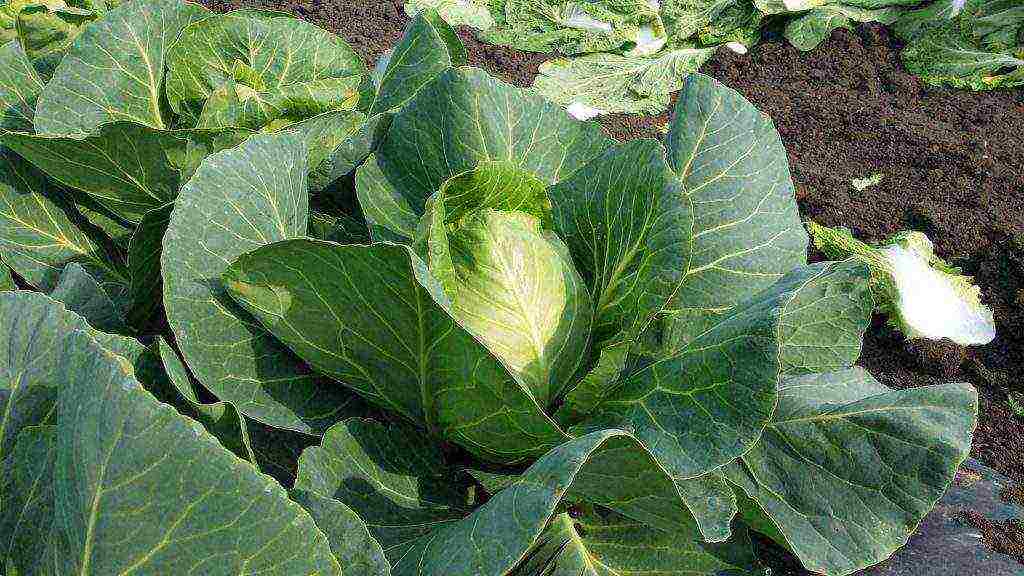
Pay attention to which vegetables were the predecessors of cabbage - tomato, radish or beets are not suitable for this. The fact is that these crops deplete the soil as much as possible, as a result of which the yield of cabbage will not be at all what you expect.
It is best to plant seedlings in those beds where legumes, potatoes or cucumbers previously grew. The acidity of the soil also affects the harvest in a bad way - cabbage does not like it, therefore, measures should be taken in advance to reduce the content of acidic substances.
Speaking about how to grow cabbage, first of all, it should be noted that sowing seeds directly on the garden bed is strongly discouraged: the culture is grown by seedlings. Seeds are sown in small containers, and after grown and strengthened shoots are transferred to the ground, when the weather is warm. 
To grow good viable seedlings, you need to choose the right soil: it must contain a lot of peat.
Seedlings need to be dived, but you can skip this step. In order for cabbage to develop well, growing and caring for it in the open field must be properly organized: both seedlings and adult plants need correct watering - excess moisture leads to decay of the root system, and a lack of moisture contributes to the drying out of the sprout, or leads to a stop in development. The same applies to the temperature regime or lighting - when it is cold around and not enough light, the sprouts stretch out and weaken.
It is noteworthy that crops do not germinate immediately: in the first weeks after sowing, the culture develops very slowly, and the first pair of leaves may appear at all on the 25th day.
In order for the grown crop to please you, do not plant weak seedlings on an open bed: only strong plants that have acquired a dark green color, which have already given two pairs of leaves, are subject to transfer to open ground. The planting scheme is as follows, between them you need to observe a distance of about half a meter, and to the next row to retreat at all 80 cm. 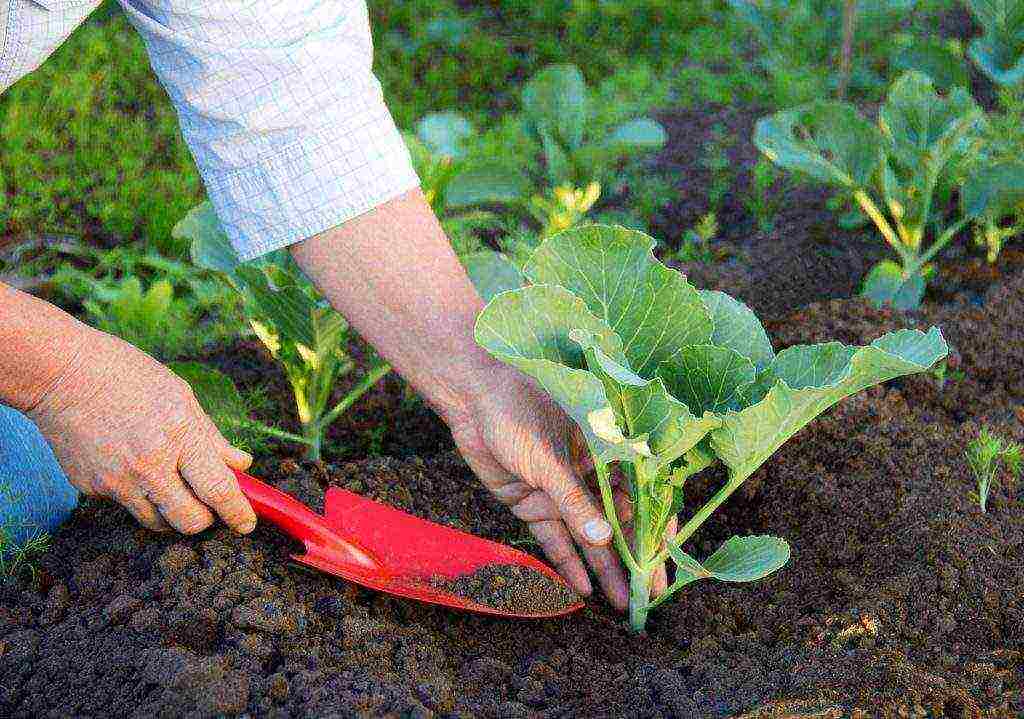
When planting, in addition to the obligatory moistening of the prepared hole, fertilizer must be applied. Compost works best for this. After the soil is compacted with the sprout, it is watered again abundantly to aid rooting. Be sure to make sure that the growth point of the seedling is not below ground level, filling it up, you doom the plant to death.
If the planting process was successful, your seedlings have successfully taken root, you can relax for a while, now no special care for the cabbage is required. All you need to do is remember to follow the moisturizing regime (water the cabbage beds moderately 2-3 times a week). After a while, the number of waterings can be reduced to one, but then it should be abundant. Experienced gardeners recommend not to carry out root watering, but to provide sprinkling, then you will moisten not only the soil itself, but also the air around the plant. 
You also need to take care of the soil in the cabbage bed, loosen it regularly, remove weeds and make sure that pests do not appear. Remember, many insects are dangerous for cabbage, so you need to fight them as soon as the problem has been noticed. We must not forget about the need for regular fertilizing: for the first time, fertilizers need to be applied no earlier than 14 days after planting in a permanent place in the open field. The second time - two weeks later, to support the developing plant. Subsequently, fertilizing should be carried out as needed, but you should not be too zealous so as not to harm the plants.
In order for your cabbage to grow as it should, planting and especially caring for it in the open field should be constant, because, like any garden crop, it needs care and attention. You also need to choose the right time for harvesting: despite the cold resistance of the cabbage, and the possible cut of the forks even with the onset of frost, you should not unnecessarily delay harvesting: overripe cabbage will surely crack. If you collect it ahead of time, the forks cannot avoid wilting, loss of presentation and taste. 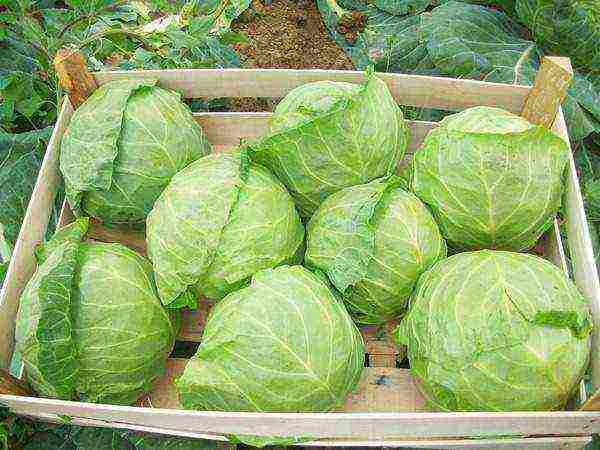
These are all the simple rules, the observance of which will help you get the harvest of your dreams, and will not cause much trouble for the entire time of growing your favorite vegetable. Remember that deviation from at least one of the requirements is fraught with negative consequences that can not only deprive you of the long-awaited harvest, but also permanently discourage the hunt from truck farming. Do not risk your own nerves and worries, do everything right, and have a good harvest!
From the video you will learn how to properly care for cabbage.
Most read:
Tomato openwork characteristics and description of the variety, photos, tips for growing
Versatile and ...
What is the difference between fodder beets and sugar beets?
Specialists, for ...
Ovid varieties
Column Description ...
Winter onions: tips for growing and planting, ripening dates
Description, techno ...
The best varieties of pink tomatoes, PRIVATE HOUSE
THE BEST CO ...
How to rejuvenate an old blackcurrant bush: when to prune, fall or spring
How right about ...
Why Aleshenkin grapes can grow even a beginner
But the wine is ...
15 best cabbage varieties with descriptions: early, mid-season and late for storage
White-headed to ...
Pear Bere: description and characteristics of the best varieties
Features of the ...
Cherry felt Natalie: photo, description of the variety, reviews
Felt cherry ...
Processing potato tubers before planting: the best means
Presowing about ...
When the pear blossoms
Homemade pears ...
Table grape varieties for cultivation in Belarus
Table varieties ...
Pear Favorite and Favorite Red
Pear Favorite ...
Do I need to water the potatoes
Potato edge ...
The best varieties of zucchini for the Moscow region with photos and descriptions, growing zucchini in the Moscow region video
Review of the best co ...
Processing gooseberries after harvest in the fall
Necessary ar ...
Sweet potato planting and caring for sweet potatoes in the Moscow region in the open field
Batat, he is to ...
How to prepare soil for seedlings - tomatoes, peppers, cucumbers
How to prepare ...
How to pollinate cherries
My garden is 47 years old ...
Melon cultivation in Siberia in the open field and in a greenhouse
Melon cultivation ...
Pear Bryansk beauty, variety description, characteristics and reviews, cultivation features
Pear Bryansk ...
Pest control of cherries: rules and techniques
Cherry trees ...
How to plant a pear in the spring: step by step instructions
How is it correct in ...
Zagoryevskaya - Yegoryevsky Nursery Nikitenko Alexandra
We have opened! R…
How to grow purple potatoes in your garden?
“I’m going to ...
Why potato tops turn yellow ahead of time: possible reasons
Why does it turn yellow ...
Eggplant varieties: most common varieties, productive Dutch hybrids
Eggplant varieties: ...
